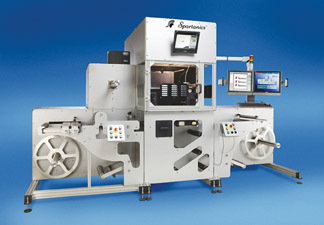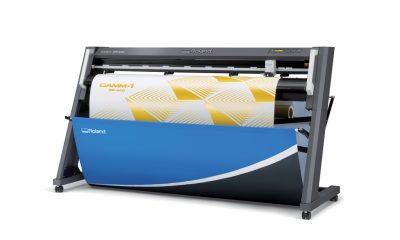Graphics Printing
Published
21 years agoon
Whenever we start consulting for a new client, we like to begin by wandering through the company’s production area during a typical day and observing how the whole place is running. Our goal is to sense the rhythm of production. We find this is the most effective way to spot inefficiencies and other factors that have a negative impact on product quality or productivity. Our experience is that most problems result from causes that are easy to overlook. So our walkthroughs concentrate on establishing how well the company adheres to standard operating practices.
Whenever we start consulting for a new client, we like to begin by wandering through the company’s production area during a typical day and observing how the whole place is running. Our goal is to sense the rhythm of production. We find this is the most effective way to spot inefficiencies and other factors that have a negative impact on product quality or productivity. Our experience is that most problems result from causes that are easy to overlook. So our walkthroughs concentrate on establishing how well the company adheres to standard operating practices. Some of the factors we assess include the following: * Is the shop clean? * Is the shop well lit? * Do operators wear gloves when required? * Is ink stored in containers with lids? * Do printers make ink adjustments on press? * Are screen frames prebowed before mesh tensioning? * Is tension measured properly? * Is the mesh material clean? * Are presses set up according to documentation from previous jobs? In as little as ten minutes and no more than 45, we can predict the level of print quality the shop maintains. We then conduct more detailed analyses of the problems we find so that we can demonstrate their impact on the shop’s product quality and efficiency. Finally, we recommend solutions that the company can incorporate in its training regimen in order to permanently eliminate the problems. In one visit we conducted, a company called us to investigate a lack of efficiency in its press room. During the course of our walkthrough, we watched the operator’s workflow as a four-color press was stopped so that his assistant could remove a squeegee assembly. The assistant wiped the squeegee clean, walked over to a sharpener, refinished the squeegee’s edges, and then walked back to the press and reinstalled the blade. We asked, "Do you always maintain squeegees in this way?" The reply was, "Yep. We’ve got to in order to keep the machine running." The press was stopped again 15 minutes later and the process was repeated. That press only ran for half an hour during a one-hour period! It appeared that no one in the facility had ever read documentation from a squeegee manufacturer or supplier explaining how to care for blade materials. If they had, they would have known that manufacturers generally suggest removing excess ink from the squeegee and then allowing the blade to rest for 24 hours before resharpening. This rest period allows solvents and other chemicals to leach out of the material. If squeegees are sharpened before the chemicals have evaporated from the material, the sharpened edge will be weak and will break down very quickly. The company we visited intended to spend more than $1 million on new equipment because it was not getting enough productivity out of its existing machines. Little did the shop’s managers know, but proper squeegee maintenance was the key to increasing the productivity of the operation. As a result of its practices, the company was not only losing production time, but it was using five times the necessary amount of squeegee material and incurring substantial but unnecessary costs. In the end, we were able to convince the company to follow squeegee manufacturers’ recommendations and allow a rest period before resharpening. The client adopted a squeegee-maintenance plan that incorporated this period and was able to ensure a steady supply of press-ready squeegees. This saved the company approximately $45,000 in materials during the first year, and the business saw its production times jump from 50% to more than 80% per shift. The company soon realized that buying more equipment was unnecessary and that a major press purchase would have left it with unrecoverable debt. You can benefit by periodically conducting a similar walkthrough of your own operation. What you find might be enlightening. You pay how much? In our work with printers and industry vendors, one thing that has become clear to us is that prices for consumables can vary enormously. We don’t mean from brand to brand, which is expectable. We mean price differences that occur on the same product from the same supplier but sold to different customers. In such situations, the price discrepancy may reflect a volume discount–one customer is buying more of the same consumable than another and therefore enjoys a better price. A discount may also apply if a customer agrees to buy all of his or her consumables through the same supplier. Sometimes, neither of these conditions applies, yet the cost discrepancies persist. What this means is that someone is being overcharged. We don’t want to imply that you should get everything as cheap as possible. And we also don’t recommend buying based solely on price. Quality and suitability for purpose have to be the main criteria for purchase. But we have found unjustified price differences of as much as 100% on the same product sold to two different printers. This indicates that either the supplier is making errors in pricing, or the printer is being misled. The key point here is that you need to be aware of common price levels for the types of products you usually buy. To avoid pricing mishaps, check the prices you paid for various consumables–mesh, squeegees, and inks–and talk to fellow printers to find out what they are paying for those same supplies. Clearly, the supermarket mentality of hammering suppliers for cheaper and cheaper products is not the answer. But it’s fair to expect a reasonable price from vendors, not a rate that is twice what the company up the street pays. UV-ink safety The phrase "no VOCs" (volatile organic compounds) is frequently associated with UV-curable inks. While there are no solvents in the conventional sense, some chemical compounds are released from the ink when it is cured on the substrate. The quantity of these materials is dependent on the type of ink used and the amount of heat present during the curing process. The release of unlinked monomers is one of the effects of the photoinitiation process that occurs during curing. The monomers can escape from the ink film and reside in the air space inside the UV curing unit. Normally, the ventilation system that takes ozone away from the curing unit also removes residual monomers and other gases from the chamber. But if the extraction system is inefficient or leaking, the monomers can be released into your shop’s atmosphere. Inhaling these monomers can pose a health risk for humans, particularly in individuals who have allergic reactions to the compounds. When monomers are released, they tend to settle and condense on surfaces throughout your shop, leaving a tacky film. In extreme cases, the walls of your shop can become discolored from the materials. The effect is similar to that of nicotine build-up and staining caused by cigarette smoke. If you use UV inks and see such films appearing in your operation, have those films analyzed to determine if they are indeed monomers from your inks. If they are, make sure that the curing unit’s ventilation system has no leaks and provides sufficient flow to extract all the monomers. Even in properly ventilated systems, the free monomers can collect on the reflectors and lamps within the curing unit. This makes routine cleaning of UV-curing units a must. Isopropyl alcohol on a soft cloth does the job very well. But take great care when handling the lamps and wear clean gloves–moisture from the skin will damage the quartz encasement of lamps and lead to their early breakdown. Etch depths of pad-printing plates The wide range of plate materials available today makes it easy to forget about a key issue: depth of etch. The main concerns with etch depth are whether the depth is suitable for the application and consistent across the plate. All too often, plates are produced very quickly and their etch depths are not checked thoroughly enough by the supplier. Depth consistency is essential because depths of 15 microns and 40 microns on the same plate will produce a significant color change in the print. Additionally, the deeper the etch, the poorer its definition. The target depth for an open etch is 25 microns and for screened etch, 30 microns. Tolerance specifications should be based on the specific application; ±2 microns is the norm. A micrometer depth gauge is insufficient for measuring etch depth, as is running a nail over the etched area. A reliable supplier will use a depth-measuring microscope. This equipment has been around for years and was originally developed for measuring the cell depths in gravure printing plates. If you produce your own plates in house, a depth measuring microscope can be a very worthwhile investment.

Subscribe

Magazine
Get the most important news
and business ideas from Screenprinting Magazine.
Most Popular
-

 Case Studies2 months ago
Case Studies2 months agoHigh-Density Inks Help Specialty Printing Take Center Stage
-

 Art, Ad, or Alchemy2 months ago
Art, Ad, or Alchemy2 months agoF&I Printing Is Everywhere!
-

 Andy MacDougall2 months ago
Andy MacDougall2 months agoFunctional and Industrial Printing is EVERYWHERE!
-

 Columns3 weeks ago
Columns3 weeks ago8 Marketing Mistakes Not to Make When Promoting Your Screen Printing Services Online
-

 Editor's Note3 weeks ago
Editor's Note3 weeks agoLivin’ the High Life
-

 Marshall Atkinson3 weeks ago
Marshall Atkinson3 weeks agoHow to Create a Winning Culture in Your Screen-Printing Business
-

 Thomas Trimingham2 months ago
Thomas Trimingham2 months ago“Magic” Marketing for Screen Printing Shops
-

 Case Studies3 weeks ago
Case Studies3 weeks agoScreen Printing for Texture and Depth






